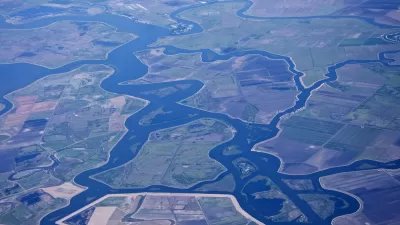The state is seeking to protect wetlands from federal regulation rollbacks, but broader protections could also mean more costly and cumbersome processes.

California is looking to put into place a new wetlands regulatory program to counter Trump administration plans to reverse federal protections. Matt Weiser takes a closer look at what this proposal would mean for state water officials and developers.
Weiser reports that the state program would use a much broader definition of what constitutes a wetland. Current federal regulations consider hydrology, soils, and vegetation. Under the state program, wetlands would be identified by hydrology or soils and they could have vegetation or not. As a result, artificial or constructed wetlands would qualify for state protection.
The state program could also include regulation of spreading basins throughout the state, writes Weiser. Water officials have expressed concern that requiring permits would turn a process essential to recharging groundwater into a costly one. In addition, regulation of farmers, who work with both soil and water, could become a complex process requiring state and federal permits and would be a burden on water agencies.
FULL STORY: Water Agencies, Farmers Fret Over California’s Move to Regulate Wetlands

Planetizen Federal Action Tracker
A weekly monitor of how Trump’s orders and actions are impacting planners and planning in America.

Chicago’s Ghost Rails
Just beneath the surface of the modern city lie the remnants of its expansive early 20th-century streetcar system.

San Antonio and Austin are Fusing Into one Massive Megaregion
The region spanning the two central Texas cities is growing fast, posing challenges for local infrastructure and water supplies.

Since Zion's Shuttles Went Electric “The Smog is Gone”
Visitors to Zion National Park can enjoy the canyon via the nation’s first fully electric park shuttle system.

Trump Distributing DOT Safety Funds at 1/10 Rate of Biden
Funds for Safe Streets and other transportation safety and equity programs are being held up by administrative reviews and conflicts with the Trump administration’s priorities.

German Cities Subsidize Taxis for Women Amid Wave of Violence
Free or low-cost taxi rides can help women navigate cities more safely, but critics say the programs don't address the root causes of violence against women.
Urban Design for Planners 1: Software Tools
This six-course series explores essential urban design concepts using open source software and equips planners with the tools they need to participate fully in the urban design process.
Planning for Universal Design
Learn the tools for implementing Universal Design in planning regulations.
planning NEXT
Appalachian Highlands Housing Partners
Mpact (founded as Rail~Volution)
City of Camden Redevelopment Agency
City of Astoria
City of Portland
City of Laramie





























